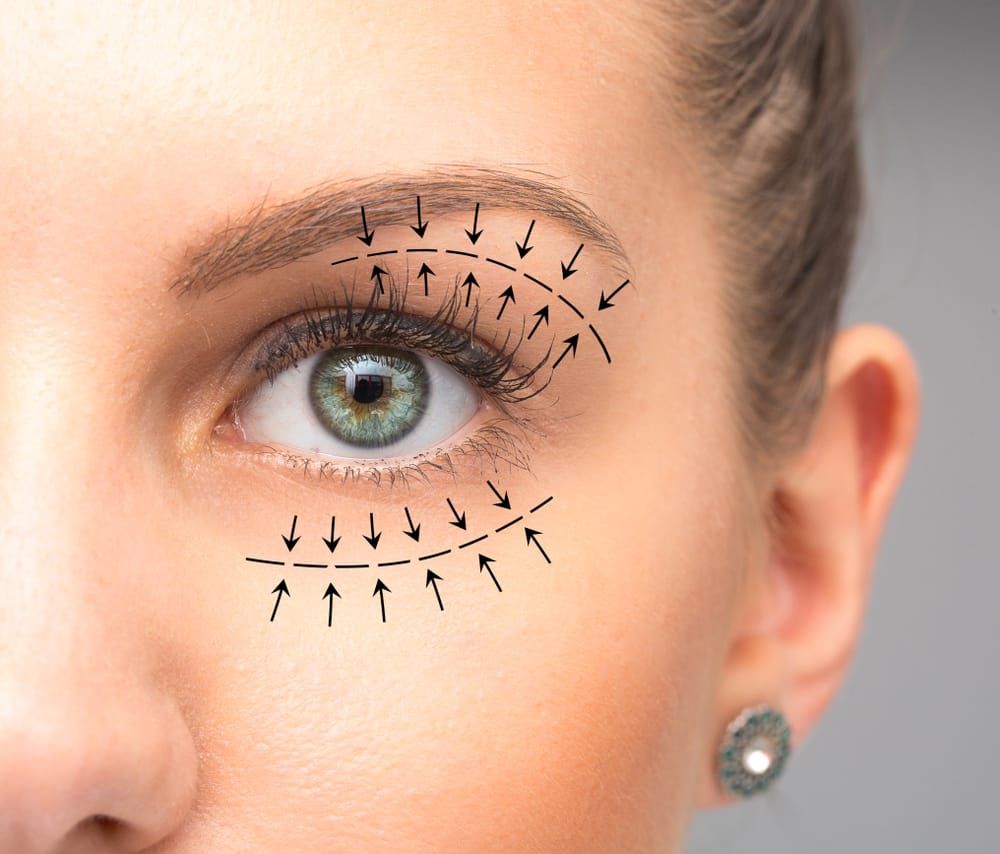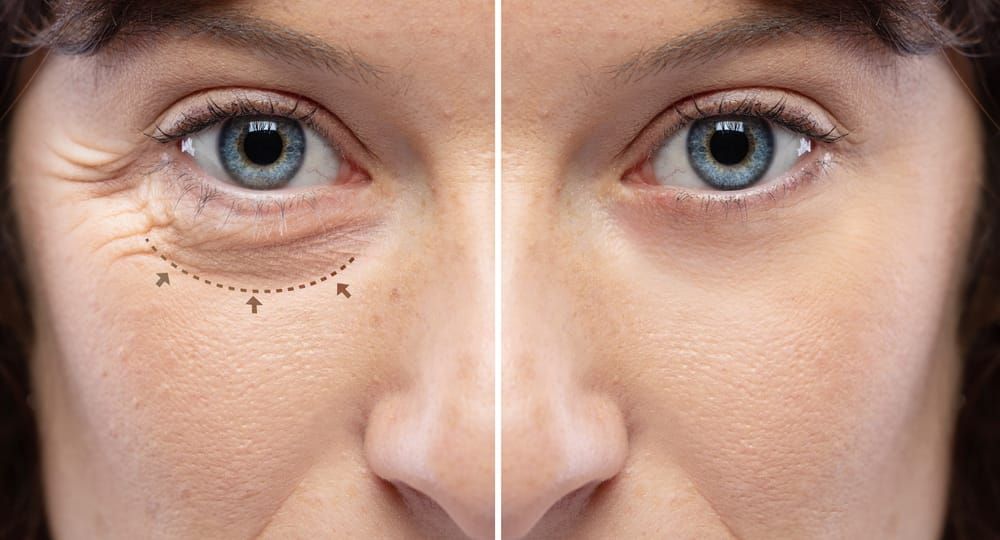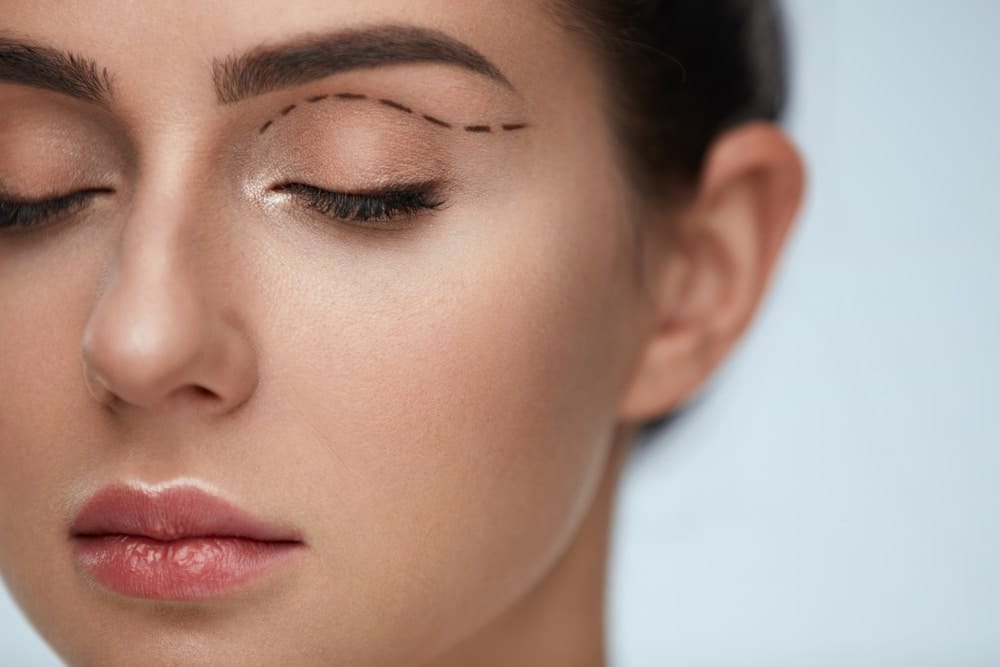Les disgrâces les plus communément en cause sont les suivantes :

- Paupières supérieures lourdes et tombantes, avec excès de peau formant un repli plus ou moins marqué,
- Paupières inférieures affaissées et flétries avec petites rides horizontales consécutives à la distension cutanée,
- Hernies de graisse, responsables de “poches sous les yeux” au niveau des paupières inférieures ou de paupières supérieures “bouffies”.
L’intervention vise à corriger ces disgrâces de façon durable, en supprimant chirurgicalement les excès cutanés et musculaires ainsi que les protrusions graisseuses, et ce, bien sûr, sans altérer les fonctions essentielles des paupières.
Il faut noter que de nombreuses autres altérations peuvent être présentes, mais que leur traitement n’est possible qu’en utilisant des techniques plus complexes qu’une simple blépharoplastie classique, ou en ayant recours à des procédés chirurgicaux complémentaires. Il en va ainsi de l’affaissement du front et de la chute des sourcils, des rides “du lion” entre les sourcils, des rides “de la patte d’oie” au coin des yeux, des “cernes“, des yeux “creux”, des yeux “tristes” avec coin des yeux tombants, ainsi que des petites imperfections de surface de la peau (rides superficielles, cicatrices, taches…).
L’intervention, pratiquée aussi bien chez la femme que chez l’homme, est couramment effectuée dès la quarantaine. Toutefois, elle est parfois réalisée beaucoup plus précocement, lorsque les disgrâces sont constitutionnelles (facteurs héréditaires) et non pas liées à l’âge, comme certaines “poches graisseuses”.
Un interrogatoire suivi d’un examen des yeux et des paupières aura été réalisé par le chirurgien à la recherche d’anomalies pouvant compliquer l’intervention, voire la contre-indiquer.
Un examen ophtalmologique spécialisé sera fréquemment demandé en complément afin de dépister une éventuelle pathologie oculaire.
Un bilan pré-opératoire est réalisé conformément aux prescriptions.
Le médecin anesthésiste sera vu en consultation au plus tard 48 heures avant l’intervention.
Aucun médicament contenant de l’aspirine ne devra être pris dans les 10 jours précédant l’intervention.
L’arrêt du tabac (ou bien la réduction maximale de sa consommation) est vivement recommandé un mois avant et un mois après l’intervention (le tabac peut être à l’origine d’un retard de cicatrisation).
En fonction du type d’anesthésie, on pourra vous demander de rester à jeun (ne rien manger ni boire) 6 heures avant l’intervention.
Type d'anesthésie
Trois procédés sont envisageables :
- Anesthésie locale pure, où un produit analgésique est injecté localement afin d’assurer l’insensibilité des paupières.
- Anesthésie locale approfondie par des tranquillisants administrés par voie intra-veineuse (anesthésie “vigile”).
- Anesthésie générale durant laquelle vous dormez complètement.
Le choix entre ces différentes techniques sera le fruit d’une discussion entre vous, le chirurgien et l’anesthésiste.
Modalités d'hospitalisation
L’intervention peut se pratiquer en “ambulatoire”, c’est-à-dire avec une sortie le jour même après quelques heures de surveillance.
Toutefois, dans certains cas, une courte hospitalisation peut être préférable. L’entrée s’effectue alors le matin et la sortie est autorisée dès le lendemain.


L'intervention
Chaque chirurgien adopte une technique qui lui est propre et qu’il adapte à chaque cas pour obtenir les meilleurs résultats. Toutefois, on peut retenir des principes de base communs :
Incisions cutanées :
Paupières supérieures : elles sont dissimulées dans le sillon situé à mi-hauteur de la paupière, entre la partie mobile et la partie fixe de la paupière.
Paupières inférieures : elles sont placées 1 à 2 mm sous les cils, et peuvent se prolonger un peu en dehors.
Le tracé de ces incisions correspond bien sûr à l’emplacement des futures cicatrices, qui seront donc dissimulées dans des plis naturels.
Remarque : Pour les paupières inférieures, en cas de “poches” isolées (sans excès de peau à enlever), on pourra réaliser une blépharoplastie par voie trans-conjonctivale, c’est-à-dire utilisant des incisions placées à l’intérieur des paupières et ne laissant donc aucune cicatrice visible sur la peau.
Résections :
À partir de ces incisions, les hernies graisseuses inesthétiques sont retirées et l’excédent de muscle et de peau relâchés est supprimé. A ce stade, de nombreux raffinements techniques peuvent être apportés, pour s’adapter à chaque cas et en fonction des habitudes du chirurgien.
Sutures :
Elles sont réalisées avec des fils très fins, habituellement non résorbables (à retirer après quelques jours).
En fonction du chirurgien, du nombre de paupières à opérer, de l’ampleur des améliorations à apporter et de la nécessité éventuelle de gestes complémentaires, l’intervention peut durer d’une demi-heure à deux heures.

